The Metropolitan Division housed in the Eastern Conference of the National Hockey League is a perennially difficult environment to thrive in for the eight teams residing there, specifically for the New York Rangers who are essentially in the process of starting from scratch in the toughest division.
Related: Capitals’ 2020-21 Season – How Do They Match Up in the Metro Division?
But not too long ago, it was declared the time for a change would be now. Over the past handful of years, the Rangers’ roster was torn down and scrutinized to see which parts of the team were salvageable. With those remaining parts and a number of new additions, the Rangers will compete against some of the stiffest competition in the league, right in their backyard.
Including the finale of the 1999-2000 NHL season when the New Jersey Devils hoisted the Stanley Cup, seven of the Cup-winning teams since have been from the Metropolitan Division – that’s the most Cups won by any division in the past 20 years.
Except it hasn’t exactly been one team dominating the division like the Chicago Blackhawks of the Central Division once did earlier in that span of 20 years.
Besides New Jersey, fellow Metropolitans, the Carolina Hurricanes, Pittsburgh Penguins, and Washington Capitals have won the Cup. Sure, the Penguins are responsible for three of those seven recent titles but the Blackhawks have earned as many in their division and yet four total Cups come from the Central.
The Metro Division As of Now
In recent years Washington, Pittsburgh, and rivaled New York Islanders have excelled in the division, neck and neck with one another, but it hasn’t been that long since the Rangers were leading the division in first place.
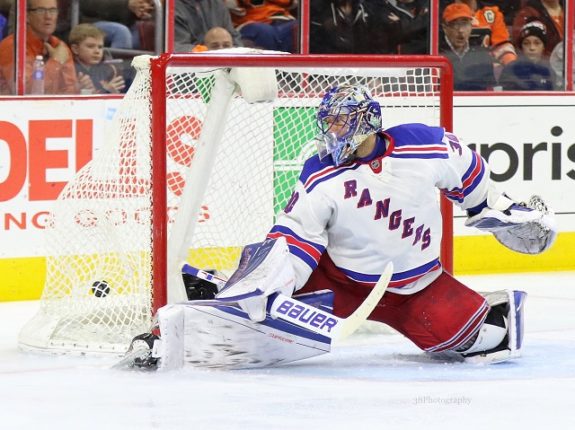
Just five years ago at the conclusion of the 2014-15 season the Rangers registered 113 points, 12 ahead of the second place Islanders and tied with the Capitals. The close numbers in the final standings show how competitive the cluster is. Compared to the Rangers’ recent collection of 79 points exemplifies how much the competition can progress in a matter of years.
With Carolina and the Philadelphia Flyers on the rise and the Penguins seemingly on a downward trend, where do the young Rangers fit in? When the league resumed the 2019-20 season this past summer, the Blackhawks, Rangers, Toronto Maple Leafs and Columbus Blue Jackets were the youngest clubs to enter the qualifying rounds.
Since trading 33-year-old Marc Staal and buying out 38-year-old netminder Henrik Lundqvist this offseason, the Rangers have decreased their age average, but it goes to show they are not the only Metro team with a young roster.
The Rangers were averaging a roster age around 25.7 before Staal and Lundqvist were moved, but according to the NHL’s roster for the Rangers at this time, is around an average of 24.6 give or take before finalization.
Using numbers provided by a graph from The AthleticNHL, the average age of Metropolitan teams around the time of last season’s start was roughly 26.8. (from ‘Sizing up the NHL: 2019-20 NHL teams by age, height, weight and nationality’ – 10/09/19) Although the Rangers shaved off a tiny fraction of their average by the time they qualified, the other teams should be within that ballpark as well.
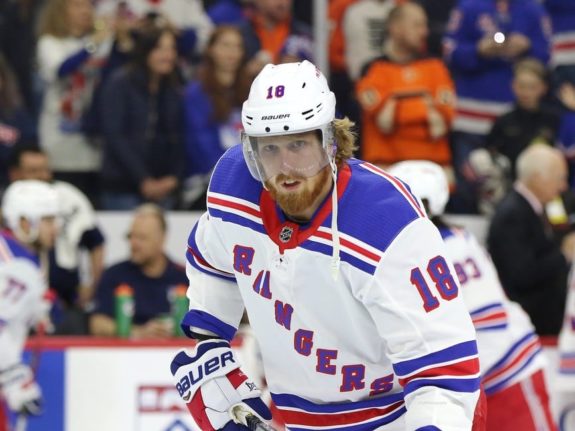
Although this upcoming season will not be the first the Rangers enter with several freshmen and sophomore players, navigating the Metro territory with a club full of seasoned professionals is never a walk in the park either.
After all, one of the reasons professional hockey is so enthralling is due to the heightened sense of unpredictability season after season.
Recent Winners of the Metro
Take the Capitals for example. They won their first Stanley Cup at the end of the 2017-18 season, a weight off their shoulders after almost risking a 44th year without a Cup. Although the team was loaded with seasoned talent, each year they would painstakingly re-evaluate their failed postseason run until they finally got it.
Yet the season immediately after, the Hurricanes eliminated the Capitals in Round 1, resulting in a massive upset. The following season would disappoint once again – another Round 1 knockout for a team who had only won the Stanley Cup two years prior and managed to avoid significant changes to the winning roster.
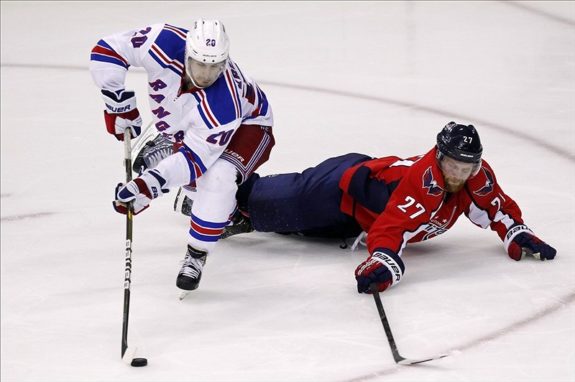
Washington’s rapid digression all boiled down to the Capitals losing sight of their depth scoring and ultimately their defense broke down. (from ‘Capitals bow out in first round again with quiet Game 5 loss to Islanders, Washington Post, 08/20/2020) This just proves it is not easy to keep momentum in this league and even harder in their division.
The Rangers could learn a thing or two from their divisional member, the Capitals. Year after year, teams consisting of an extremely familiar core act as a well-oiled machine during the regular season, somehow transcending beyond total awareness of each other during every second on the ice. Every box on the championship checklist is checked off, a formula that takes years and years to exact.
Even though the Rangers have been adding new and younger faces to the team, the club will once again need to rekindle the chemistry of last year’s squad, factor in the additions and subtract the losses to replicate cohesion.
The Changes to Face Heading into the Season
The Rangers meet another element of unique change – the loss of Lundqvist, a leader and a very familiar face for the past 15 years, will undeniably change the tone of the group.
Related: Rangers Goaltending Is in Great Shape Post-Lundqvist
Familiarizing with 24-year-old former backup Alexandar Georgiev and new arrival 24-year-old Igor Shesterkin’s uptick of appearances in the net will be an adjustment. The reconstruction of defensive partners and linemates will be an adjustment. New defensive systems implemented by the new assistant coach will be an adjustment. The list of impending changes goes on and on.

But if any club is ready to adapt for a resurgence, it is the Rangers.
For the past few seasons, the organization has undergone a number of changes. Big-name additions, shedding fan favorites and swapping the staff members. Although their progress does not look stellar on paper, there has been some great progress made in this short amount of time.
The hard thing to predict is how long it’ll take players to form chemistry if they can communicate effectively and when it is time to break a system down and try new things.
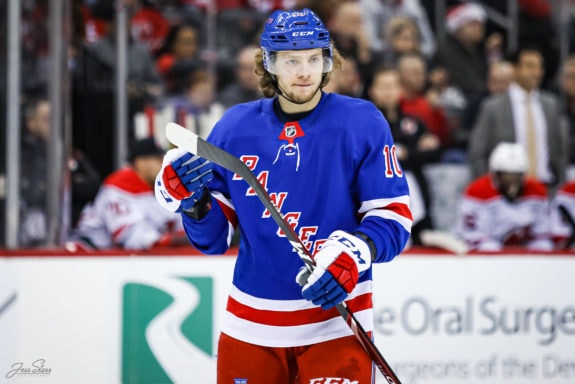
Arguably every single member of the New York franchise will need to learn something for a deep Cup run to happen – everyone from the great Artemi Panarin to rookie Alexis Lafreniere.
With the Rangers’ youth movement there would presumably be more time for younger players to curb the likelihood of falling into the trap of costly bad habits.
Sure, 22-year-old defensemen Adam Fox and Ryan Lindgren are still developing, but the duo has done quite well individually and together.
Related: Rangers Plan for Defense Remains Unclear
Despite being different types of defenders while still acknowledging their blunders, defensemen are usually the first to be the focus of blame and yet, the two have performed quite well.
Fox even finished fourth overall in voting for the Calder Trophy, awarded to the best first-year player in the whole NHL. He was averaging over a half-point per game and was solid with his defense as well.
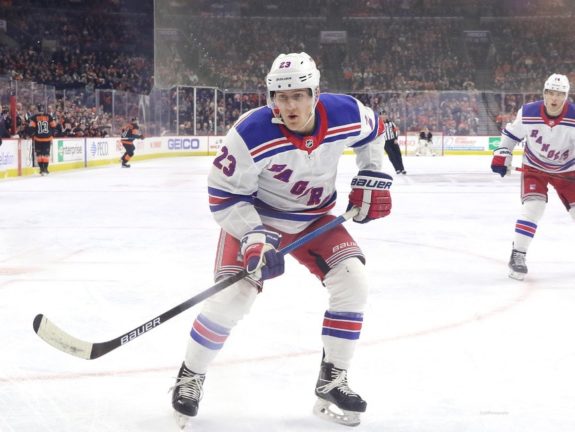
Meanwhile Lindgren provided a lot of the edge missing from the Rangers for so long and thusly awarded with ample ice time for a young player.
Another great thing about giving the kids a lot of ice time is that they learn how to shut down the other players in the league, too. They can study the tendencies of the big scorers and further reduce their scoring success next shift, next game, and next season.
The more exposure they can receive independently and collectively, the quicker they will function smoother as a group.
Competition in the Metro
In the division as a whole, the Rangers will most likely struggle again against the Flyers and Capitals. The Rangers had a season split with the lackluster Devils last season, if New Jersey finds a way to bounce back, they could give the Rangers trouble again this year.
The Philadelphia Flyers are in a similar spot with their young goaltender, Carter Hart, although their roster does not feature as many young skaters. (from ‘The Flyers need Carter Hart to keep being great, but his idol’s past proves that’s no guarantee | Mike Sielski,’ Philadelphia Inquirer, 08/22/2020) Philadelphia, however, still plays with the same physical mentality as they did when the team entered the league in 1967. Teams like this are likely the ones the Rangers will struggle against most – the big and physical, more old-school hockey clubs.
However, the Rangers should continue to be crafty enough to defeat the Hurricanes, Blue Jackets, Islanders again, and perhaps even the aged Penguins team this year.
It is very likely the Rangers will actually enter this season as the youngest club in the league. That statement should not cause much worry, however. Consider how disastrous the past season could’ve gone for the Rangers and the team was pretty much in the same position.
Even in the negatives, there are lessons learned and experience gained. An opportunity with a team of similar-aged goaltenders and skaters is a special situation for the Rangers.